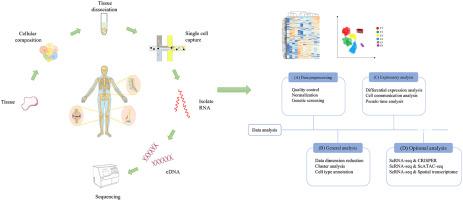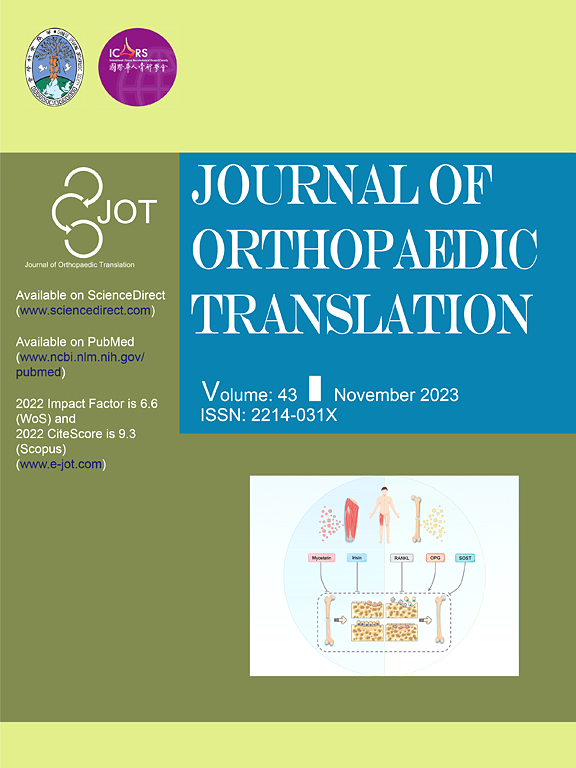From cells to clinic: Single-cell transcriptomics shaping the future of orthopedics
IF 5.9
1区 医学
Q1 ORTHOPEDICS
引用次数: 0
Abstract
Single-cell RNA sequencing (scRNA-seq) technology hold significant potential for advancing orthopedic research. This review examines the impact of ScRNA-seq on the future development of orthopedic research and practice. In the study of osteoarthritis, scRNA-seq can finely characterize the changes in the subsets of chondrocytes and their role in disease progression. In rheumatoid arthritis, this technique reveals the complex heterogeneity and cell-to-cell interactions between fibroblasts and immune cells. ScRNA-seq offers insights into the heterogeneity of nucleus pulposus, annulus fibrosus, and endplate cells, providing a novel perspective on the pathological mechanisms of intervertebral disc degeneration. Single-cell analysis in osteosarcoma research has uncovered the complexity of the tumor microenvironment and mechanisms of immunosuppression. Through these studies, scRNA-seq enhances insights into disease pathogenesis and offers innoviate approaches for precision medicine and personalized treatment strategies.
The Translational Potential of this Article
This article systematically reviews the cellular heterogeneity, molecular mechanisms and immune microenvironment of orthopedic diseases (such as osteoarthritis, rheumatoid arthritis, intervertebral disc degeneration, osteosarcoma) by single-cell RNA sequencing (scRNA-seq), which provides a theoretical basis for accurate diagnosis, new therapeutic target discovery (such as TRPV1, CXCR4) and individualized treatment strategies. The combination of multi-omics and spatial transcriptome technology is expected to accelerate clinical translation and optimize the diagnosis and treatment system of orthopedic diseases.

从细胞到临床:单细胞转录组学塑造骨科的未来
单细胞RNA测序(scRNA-seq)技术在推进骨科研究方面具有巨大的潜力。本文综述了ScRNA-seq对骨科研究和实践未来发展的影响。在骨关节炎的研究中,scRNA-seq可以很好地表征软骨细胞亚群的变化及其在疾病进展中的作用。在类风湿性关节炎中,这项技术揭示了成纤维细胞和免疫细胞之间复杂的异质性和细胞间的相互作用。ScRNA-seq提供了对髓核、纤维环和终板细胞异质性的见解,为椎间盘退变的病理机制提供了新的视角。单细胞分析在骨肉瘤研究中揭示了肿瘤微环境的复杂性和免疫抑制机制。通过这些研究,scRNA-seq增强了对疾病发病机制的认识,并为精准医疗和个性化治疗策略提供了创新方法。本文系统综述了骨关节炎、类风湿关节炎、椎间盘退变、骨肉瘤等骨科疾病的细胞异质性、分子机制和免疫微环境,为准确诊断、发现新的治疗靶点(如TRPV1、CXCR4)和个体化治疗策略提供理论依据。多组学与空间转录组技术的结合有望加速骨科疾病的临床转化,优化骨科疾病的诊断和治疗体系。
本文章由计算机程序翻译,如有差异,请以英文原文为准。
求助全文
约1分钟内获得全文
求助全文
来源期刊

Journal of Orthopaedic Translation
Medicine-Orthopedics and Sports Medicine
CiteScore
11.80
自引率
13.60%
发文量
91
审稿时长
29 days
期刊介绍:
The Journal of Orthopaedic Translation (JOT) is the official peer-reviewed, open access journal of the Chinese Speaking Orthopaedic Society (CSOS) and the International Chinese Musculoskeletal Research Society (ICMRS). It is published quarterly, in January, April, July and October, by Elsevier.
 求助内容:
求助内容: 应助结果提醒方式:
应助结果提醒方式:


